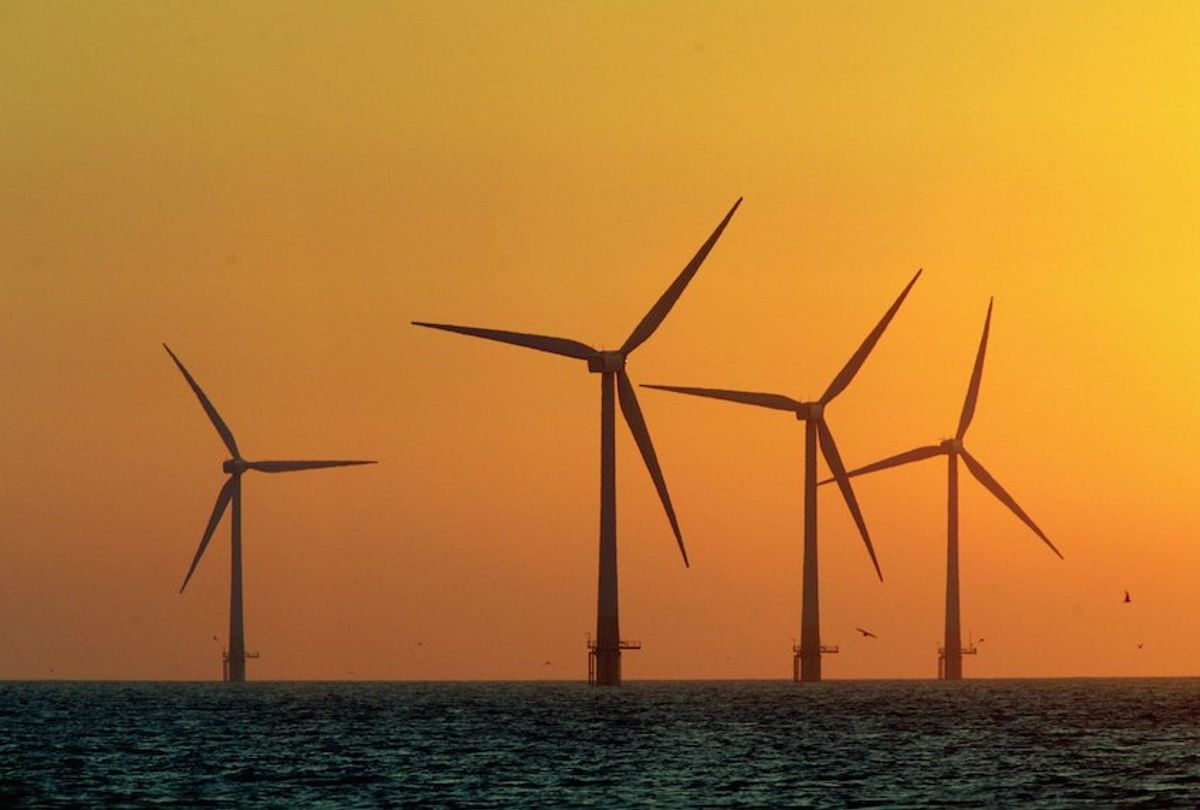Not only is offshore wind power better for the planet compared to oil and gas, it's also better for taxpayers. That's according to a new analysis from the Center for American Progress, a nonpartisan policy research institute.
"Americans are getting significantly more return on investment from offshore wind energy lease sales than they are from oil and gas lease sales" per acre, said Michael Freeman, a conservation policy analyst for the Center and author of the report.
Offshore leases are essentially patches of publicly-owned waters rented out by the Bureau of Ocean Energy Management for energy production — a process governed by the National Environmental Policy Act, or NEPA. The money made from these leases goes to the U.S. Treasury Department, and, through public program funding, back into the pockets of taxpayers.
From 2019 to 2021, the average winning bid from offshore oil and gas lease sales was $47 per acre. By contrast, the average winning bid for a wind lease sale was 125 times higher — just over $5,900 per acre. And that number is likely to get even higher given the American wind industry is still in its relative infancy, said Jenny Rowland-Shea, the Director of Public Lands for the Center for American Progress.
With such a high return on investment, the new analysis suggests offshore wind leases could be a promising source of public revenue in comparison to oil and gas leases, while also reducing energy and fuel costs. Freeman said this money could be redistributed to taxpayers in the form of funding federal agencies or paying for health and education programs: "Expanding offshore wind energy is good for [taxpayers'] driving, for their wallet, for the air that they breathe."
And of course, there are environmental benefits too. Energy produced by offshore wind does not result in the same climate consequences as offshore oil and gas energy production, which releases up to 87 metric tons of carbon dioxide per active acre in the Gulf of Mexico. That's roughly the equivalent carbon pollution of 19 cars driven for one year. And according to the report, the social cost of carbon emissions per acre for oil leases is over $16,000 and roughly $2,800 for natural gas leases. Meanwhile, the social cost of carbon emissions from offshore wind power is "essentially nil" per acre, Freeman said. "Clean energy really is clean."
Offshore wind power has a long way to go before it can come close to the scale of its oil and gas equivalent, but the U.S. has announced big plans for the industry. Early in 2021, the Biden administration set the goal of producing 30 gigawatts of offshore wind power by 2030, or enough to power 10 million homes. This August, Biden signed the Inflation Reduction Act into law, which tied the Bureau of Ocean Energy Management's ability to issue offshore wind leases to oil and gas leasing, effectively connecting the expansion of offshore wind to expansion of offshore oil and gas energy production.
Prior to the Inflation Reduction Act, the Bureau of Ocean Energy Management had only sold two offshore wind leases to U.S. operators, which contribute less than 1 percent of the energy required to reach the 30-gigawatt goal.
While energy analysts say offshore wind lease sales create greater return on investment for the government and produce more energy per acre compared to offshore oil and gas, the latter is, at least for the present time, more cost effective. That's because of the high start-up costs associated with the relatively new offshore wind industry. Nevertheless, Freedman said he expects offshore leases to shift away from oil and gas in the future.
The report shows that offshore wind leasing is a valid way to harness ocean energy resources, Rowland-Shea said, and at a crucial time. "What's at stake is acting on the climate emergency and our transition to a clean energy economy."




Shares